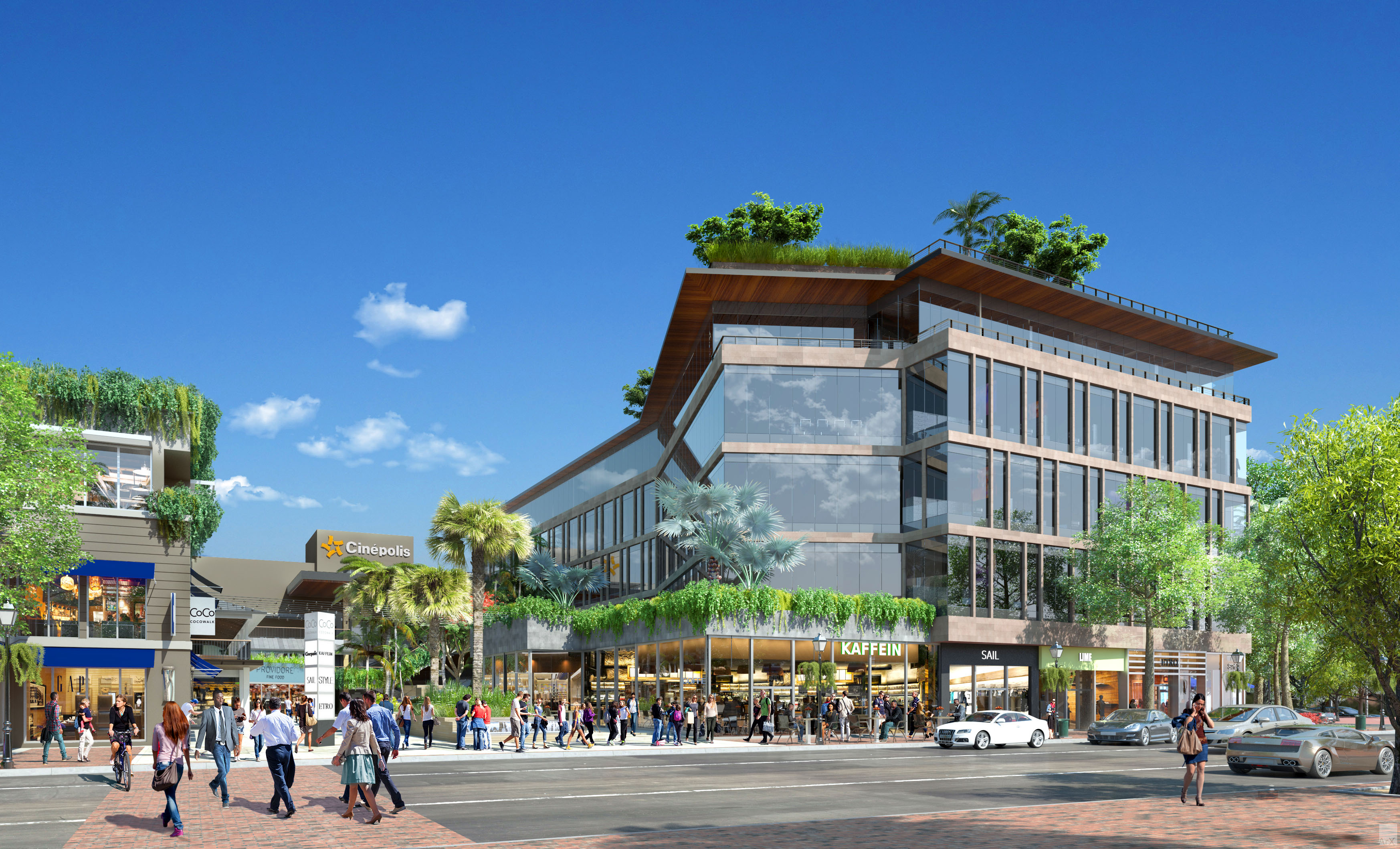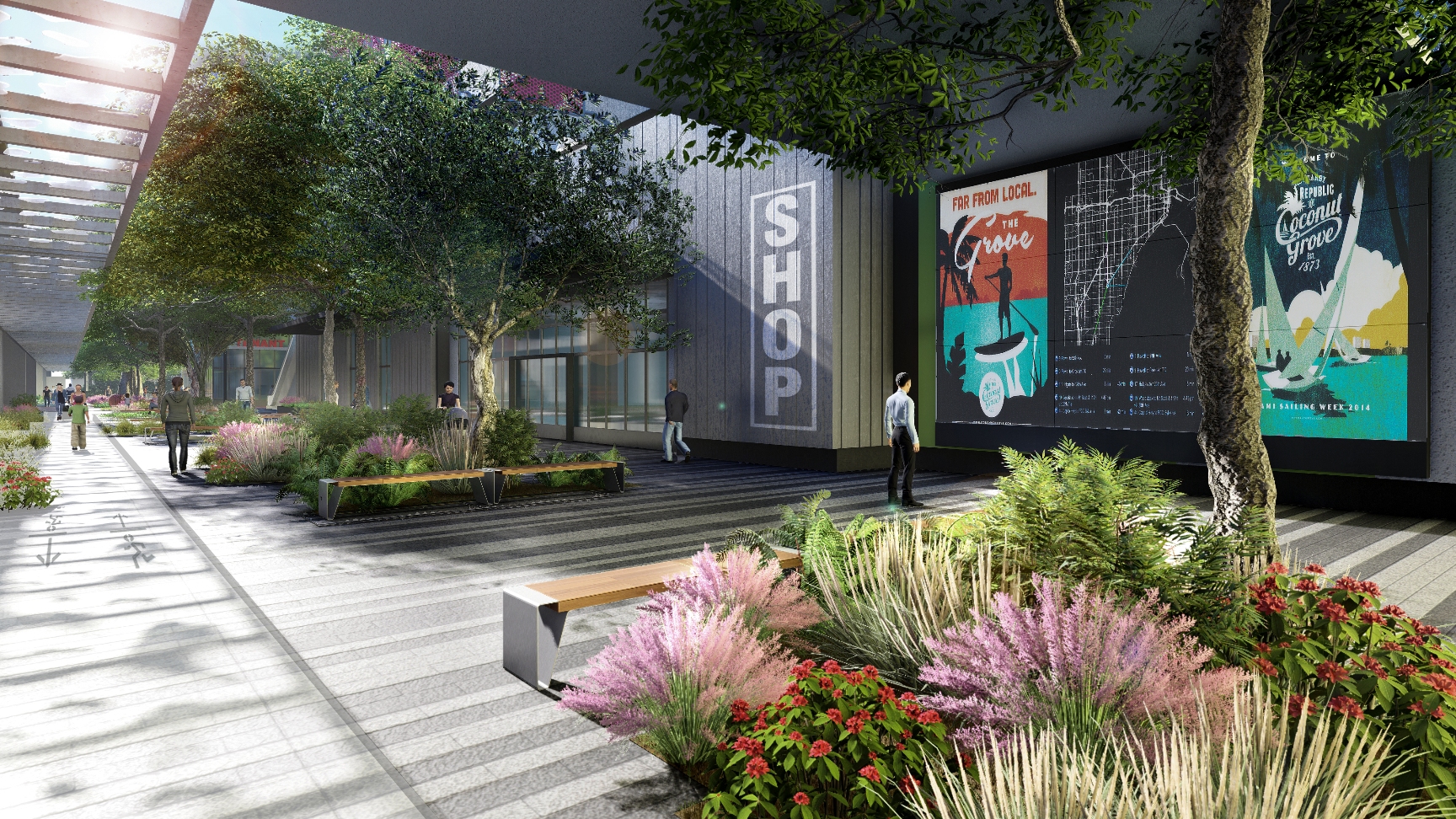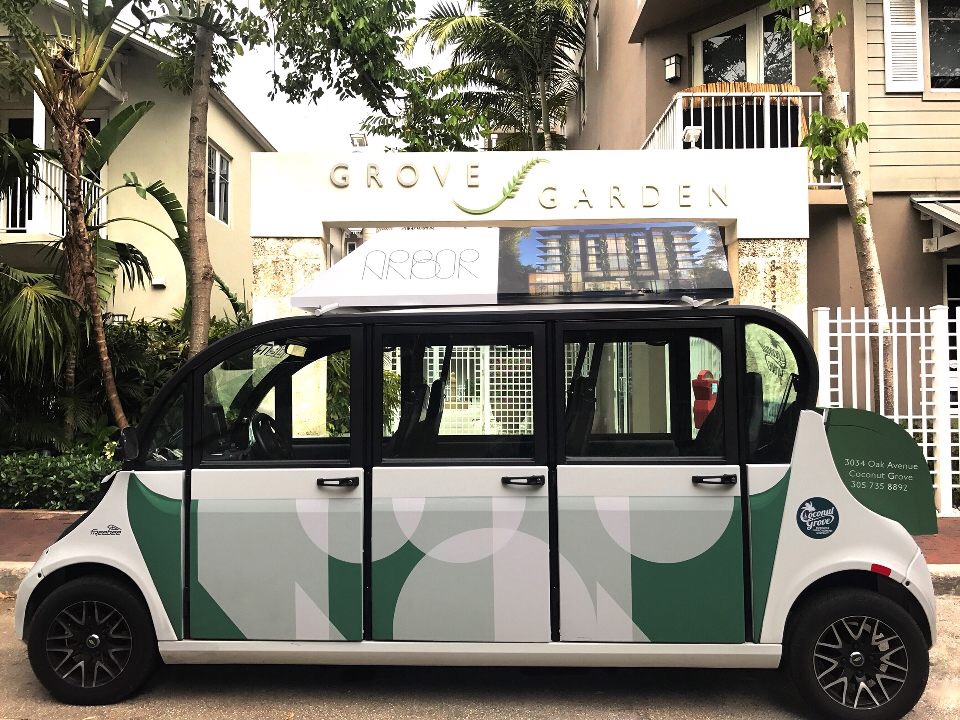When Miami’s Coconut Grove neighborhood was settled in the 1800s, there were no cars, no ride sharing apps, no rail, and definitely no scooters. Today, as infill and transit oriented development become the go-to models for developing in South Florida, Miami’s original urban district is seeing a flood investment and development activity – and many more people are on the way.
But because Coconut Grove’s commercial center pre-dates the advent of mass transit, the public and private sectors are coming up with creative ways to move people.

Building a place where people want to go
“In two years, the Grove will be transformed. It will be vibrant. A place where people want to go,” explained Michael Comras, CEO of the Comras Company, in a recent Miami Herald Business Monday cover story. Comras is part of the team revamping the Grove’s commercial anchor, CocoWalk, elevating the property from a tourist-driven retail center to a mixed-use destination that includes retail and Class A office space.
CocoWalk isn’t alone. Coconut Grove’s walkable urban core has several new projects under development, including a Mr. C luxe hotel by Cipriani—the brand’s first hotel in Florida— multiple office buildings, and condo towers designed by world-renowned architects. Additionally, dozens of new shops, restaurants, and cafés have opened over the past year.
All of this growth begs the question: what can be done to get people out of their cars and on their feet?
Bridging the gap between people and transit

Developer David Martin of Coconut Grove-based Terra Group has part of the answer. Martin’s firm is partnering with Grass River Property to bridge the gap between people and transit by jumpstarting development adjacent to existing infrastructure and making connectivity a priority. The firm’s newest project, Grove Central, will create a multi-modal hub combining workforce housing, neighborhood retail and public transit on a single site at the entrance to Coconut Grove. (Read more about Grove Central’s resiliency features in this Miami Herald cover story.)
“More people walking promotes more people walking,” explained Martin. “That’s one feature of the Grove we’d like to see more of. We also need to create new transit connections that help people break free of the car-first mentality.”
Martin isn’t alone. The Coconut Grove Business Improvement District (BID) is also tackling the area’s mobility challenges head-on.
When the City of Miami initiated a network of free trolley routes five years ago, the Grove was left out of the mix. Recognizing the role that trolleys can play in eliminating road congestion, the Grove BID allocated $400,000 to purchase two trolleys for the neighborhood.

The BID is also partnering with an app-based electric shuttle service, Freebee, which ferries people over short distances throughout Coconut Grove. BID Executive Director Nicole Singletary came up with the idea, noting that “new transit options are an important part of strengthening the Grove’s appeal as a residential, tourism and lifestyle destination.”
A look into the future: smart parking
Recognizing that car travel isn’t going away anytime soon, the BID has teamed up with the Miami Parking Authority to launch a pilot program that’s tracking parking activity in Coconut Grove’s commercial core.
The data being collected is the first step toward instituting a ‘smart parking’ system which will enable drivers to reserve a spot before they arrive in the neighborhood.
Coconut Grove is a living laboratory for exploring and testing alternative modes of transit in a city that is synonymous with urban sprawl. Whether it’s the public or private sector, creativity is going to be key when it comes to building 21st-century communities.







 See More Blogs
See More Blogs
Comments